Quick Summary
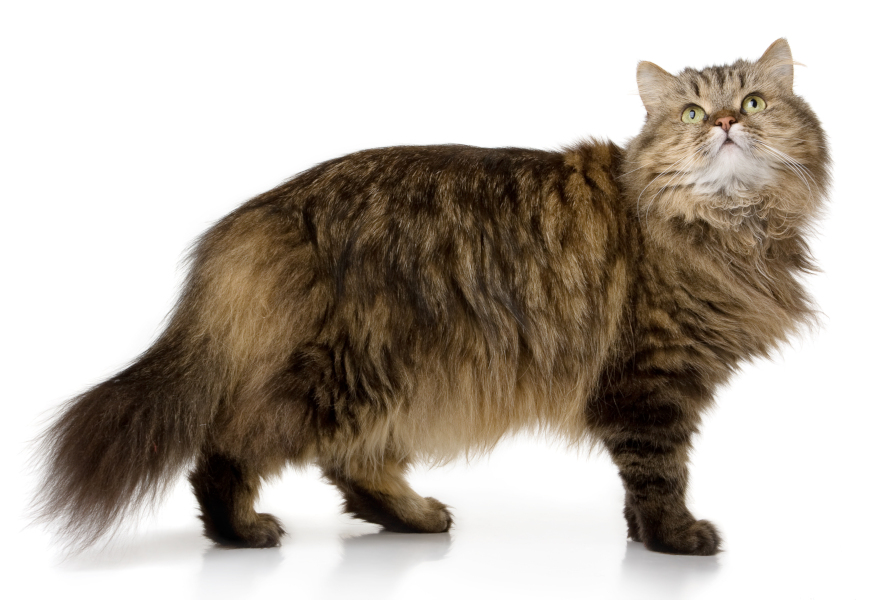
Click here for Price and Turnaround Time
Phenotype: Hair length is variable across cat breeds and even between individuals within breeds. Four mutations that produce long-haired coats in domestic cats have been identified in a single gene. Three of the mutations are fairly breed specific, while the fourth is present in all long-haired cat breeds and crossbreds.
Mode of Inheritance: Autosomal recessive
Alleles:
N = Normal
M1 = Long Hair Mutation 1 (Ragdolls)
M2 = Long Hair Mutation 2 (Norwegian Forest Cats)
M3 = Long Hair Mutation 3 (Maine Coons and Ragdolls)
M4 = Long Hair Mutation 4 (all breeds of long hair cats)
Breeds appropriate for testing: Many breeds
Explanation of Results:
- Cats with N/N genotype have short hair and cannot transmit any of these long hair variants to their offspring. They cannot produce long-haired kittens.
- Cats with N/M1, N/M2, N/M3, or N/M4 genotype have short hair and are carriers of a long hair trait. They will transmit their long hair variant to 50% of their offspring. They can produce short- and long-haired kittens depending on the genotype of the mate.
- Cats with M1/M1, M2/M2, M3/M3, or M4/M4 genotype have long hair. They will transmit their long hair variant to all of their offspring. If bred to a long-haired mate, they will produce only long-haired kittens.
- Cats with M1/M2, M1/M3, M1/M4, M2/M3, M2/M4, M3/M4 have long hair and have two different long hair variants. They will transmit a long hair variant to all of their offspring. If bred to a long-haired mate, they will produce only long-haired kittens.
Cat DNA tests are carried out using cells brushed from your cat's cheeks and gums using household cotton swabs.
The cat DNA submission form with instructions and a place to tape the cotton swabs is sent to you via email after you place an order, and can be printed from your home computer. DNA test kits are no longer mailed.
Instructions
Step-By-Step:
1.
 Purchase regular household cotton swabs for cat DNA collection (the cotton swabs can be purchased at a pharmacy or drug store)
Purchase regular household cotton swabs for cat DNA collection (the cotton swabs can be purchased at a pharmacy or drug store)
2.
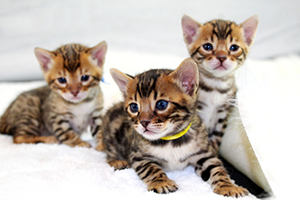
Make sure the cat has not had anything to eat or drink for at least 1 hour prior to collecting sample.
When swabbing kittens, isolate each kitten from the mother, littermates and any shared toys for 1 hour prior to swabbing. Kittens should not have nursed or eaten for 1 hour prior to collecting sample.
If collecting samples from more than one cat, make sure to sample one cat at a time and wash your hands before swabbing another cat.
3.
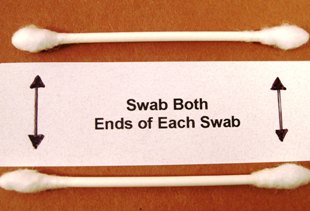 Use both ends of the two cotton swabs for a total of four swabs.
Use both ends of the two cotton swabs for a total of four swabs.
4.
Place the cotton head of the swab between the cat’s gums and cheek and rub or rotate the swab back and forth for 15 seconds. Repeat with each cotton swab head, for a total of 4 swabs. We recommend swabbing a different area of the gums with each swab head.
5.
Wave the swab in the air for 10-15 seconds to air dry it before attaching it to the submission form.
6.
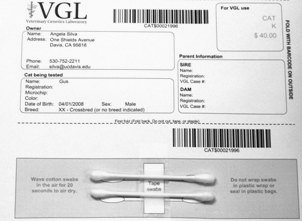 After swabbing the cheek and gums, tape the cotton swabs to the bar-coded submission form printed from your MyVGL account.
After swabbing the cheek and gums, tape the cotton swabs to the bar-coded submission form printed from your MyVGL account.
ATTENTION:
- Do not collect saliva/drool – the key to obtaining a good sample is getting cheek cells on the swab.
- Do not rub swab on the cat’s tongue or teeth – this will result in poor quality sample.
- Do not collect a sample from a kitten that has recently nursed – the mother’s genetic material can rub off on the kitten’s mouth and contaminate the sample.
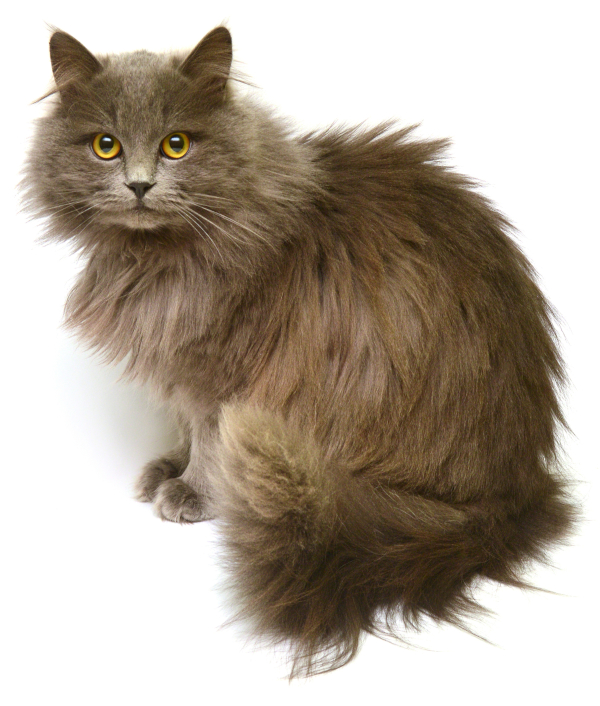
Cat hair coat colors, patterns, and texture are determined by the combined action of several genes. One gene – fibroblast growth factor5 (FGF5) – determines hair length. Short hair is a dominant trait determined by the wild-type form of FGF5. Long hair is a recessive trait. Four mutations in FGF5 have been identified that are associated with long hair in cats. Long-haired cats can carry two copies of the same mutation (homozygote recessive) or have two different mutations, one on each chromosome (compound heterozygote). Three of the mutations are fairly breed specific, while the fourth is present in all long-haired cat breeds and crossbreds, as follows:
Mutation 1 (M1): present in Ragdolls
Mutation 2 (M2): present in Norwegian Forest Cats
Mutation 3 (M3): present in Maine Coons and Ragdolls
Mutation 4 (M4): present in all breeds of long hair cats, including Ragdolls, Maine Coons, and Norwegian Forest Cats.

This test for long hair that detects the 4 common mutations in cats (listed above). It is possible that other mutations causing long hair may exist which have not yet been identified.
